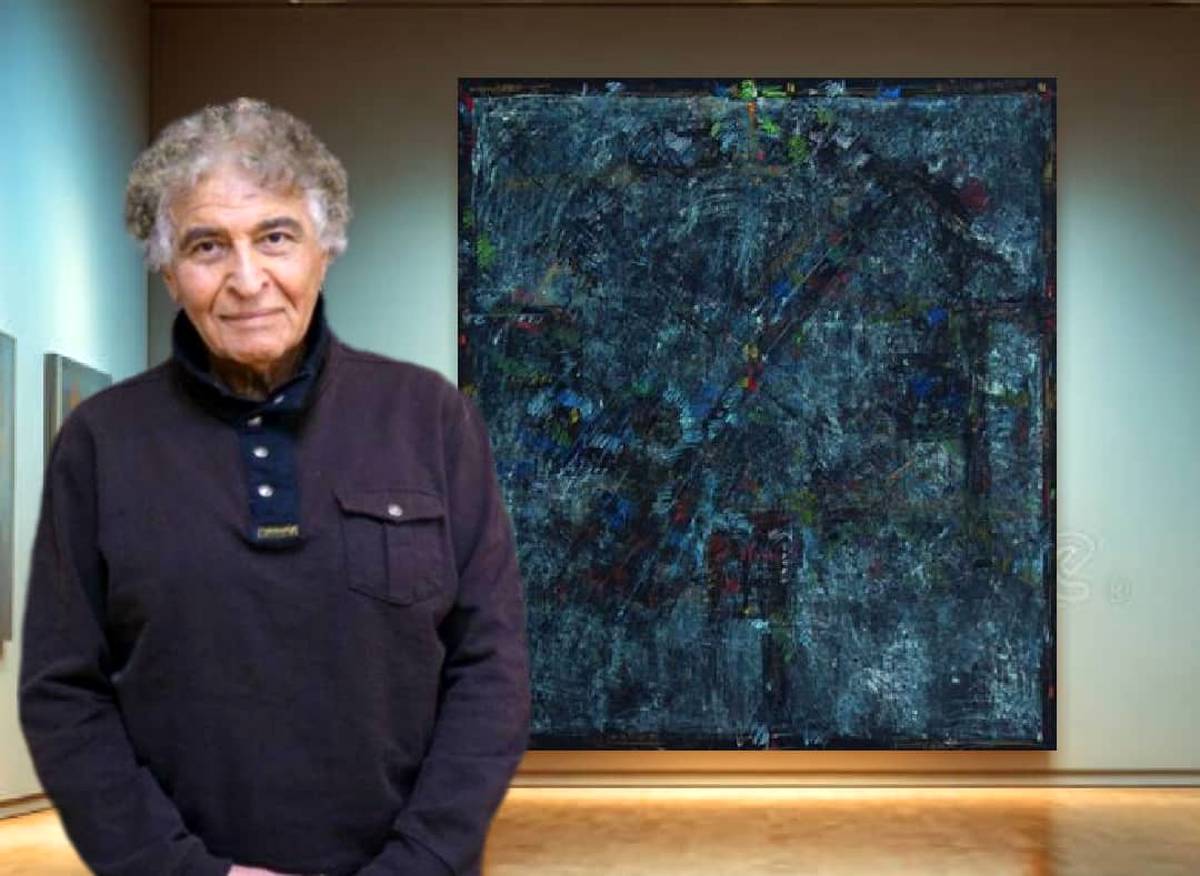
Massoud Arabshahi: Mythic Abstraction in the Raha Gallery Collection
Massoud Arabshahi, the eminent Iranian painter, was born on September 10, 1935, and passed away on September 16, 2019. On the occasion of his birthday, we revisit one of his remarkable works housed in the Raha Gallery Collection. This painting stands as a clear example of Arabshahi’s enduring approach to mythic abstraction. Throughout his career, such works reflected his lifelong concern with reimagining the visual language of ancient Iran in a contemporary form. In terms of both scale and technique, the piece ranks among his important works, simultaneously embodying painterly mastery and intellectual depth.
ArtDayMe : The Raha Gallery Collection Founded and directed by
Mohammadreza Ghaemmaghami, Raha Gallery Collection has been active for over two decades with a consistent cultural mission: promoting the art of the region while preserving modernist and contemporary masterpieces by Iranian and Arab artists.
Among these treasured works is an untitled painting by the late Massoud Arabshahi, executed in oil on canvas (174 × 195 cm) in 2002.

Arabshahi, widely regarded as a pioneering conceptual painter in Iran, became synonymous with the revival of ancient mythological motifs and cryptic traces of Persia’s distant past. In some of his works, he incorporated overt mathematical and geometric calculations, while in others, he abstracted mythical foundations of ancient art through modern methods.
His artistic distinction was recognized internationally: first prize at the Fourth Tehran Biennial (1964), first prize at the Monaco International Exhibition (1973), first prize at the Mother’s Day Exhibition (1973), and first prize at the Tehran Sculpture Competition (1974).

This particular painting from the Raha Gallery Collection is built upon an abstract structure, where layered and intricate textures unfold across the canvas. Oblique and intersecting lines animate the dark background with an inner, hidden dynamism. While devoid of direct narration, the work conveys a sense of cartography or ancient inscription, recalling tablets and relics often present in Arabshahi’s oeuvre.
The palette is predominantly dark and cool—deep blues, grays, and blacks—punctuated with warmer bursts of red, green, and yellow. This contrast creates an atmosphere of “night” or of being “veiled by the dust of time.” The scattered patches of color serve as subtle signs of life, resilience, and energy within a worn, shadowy field.
Arabshahi’s dense, scratch-like brushwork evokes the slow, persistent process of excavation or inscription. Layers of paint overlap, as though the canvas were a wall repeatedly painted and scraped over. This technique lends the work an archaeological quality—like a fragment of an ancient mural or tablet unearthed from history.

Despite its visual turbulence, the composition holds together through diagonal axes and intersecting lines that guide the viewer’s gaze across the canvas without returning to a fixed center. This continuous movement suggests restlessness and a constant search. A square-like frame at the edges lends the work a sense of the sacred enclosure.
The surface evokes both the erosion of time and the persistence of cultural memory. The piece has no direct narrative, yet its ritualistic, enigmatic atmosphere makes it resemble a lost tablet, its meaning obscured by centuries, leaving only fragments and signs.
Created in 2002, the work belongs to Arabshahi’s mature period, when Iranian modernism was undergoing a re-examination of cultural and historical roots. With his abstract language, Arabshahi forged a link between global modernism and the heritage of the ancient East.

The Tehran Auction’s third catalog (2014) described the painting in detail, highlighting its simultaneous historical ambiguity and contemporary impact, its symbolic and mythological visual vocabulary, and its power to merge painting, architecture, and archetypal signs into a single monumental whole.
Through his decades of practice, Arabshahi consistently explored ancient cultures—at times directly incorporating Mesopotamian, pre-Islamic, or Islamic Persian motifs, and at others abstracting them into modernist reinterpretations. This work exemplifies the latter approach, transforming indigenous elements into an abstraction reminiscent of Abstract Expressionism, yet deeply rooted in the archeological and cultural memory of Iran.

This exceptional painting belongs to the Raha Gallery Collection, Middle East.

LEAVE A RELPY